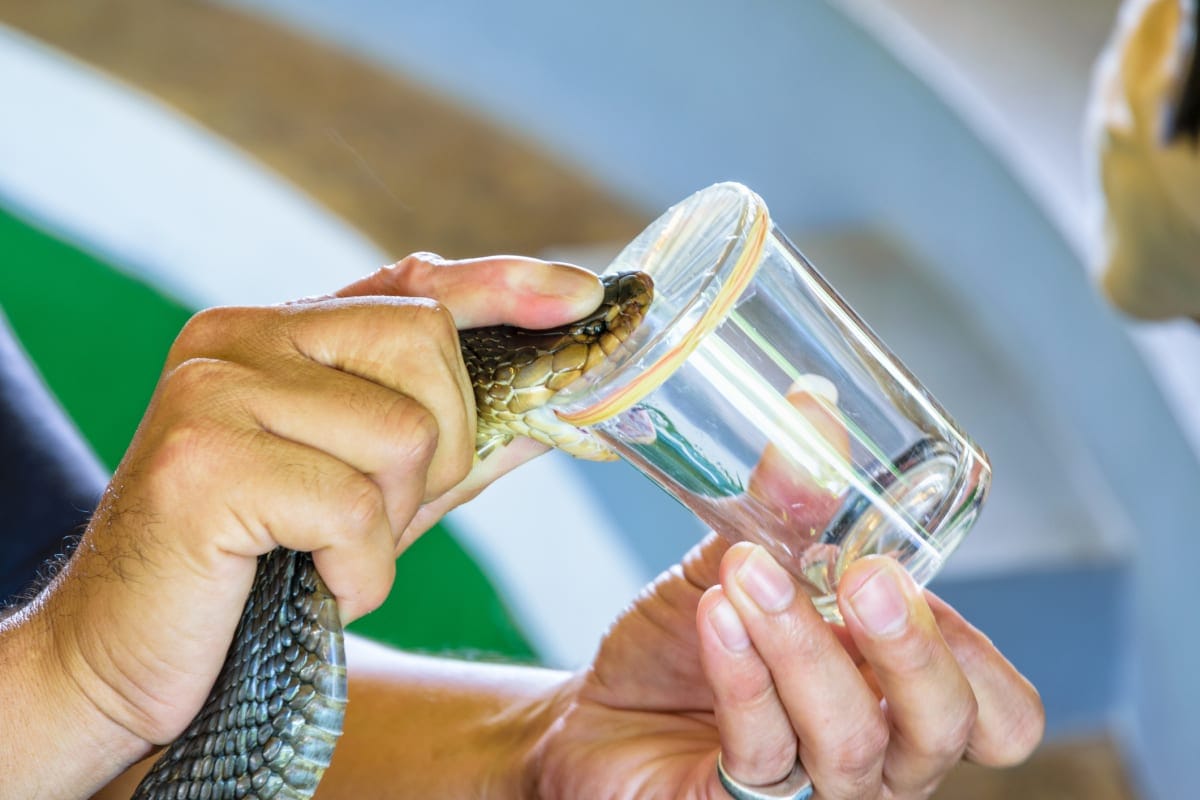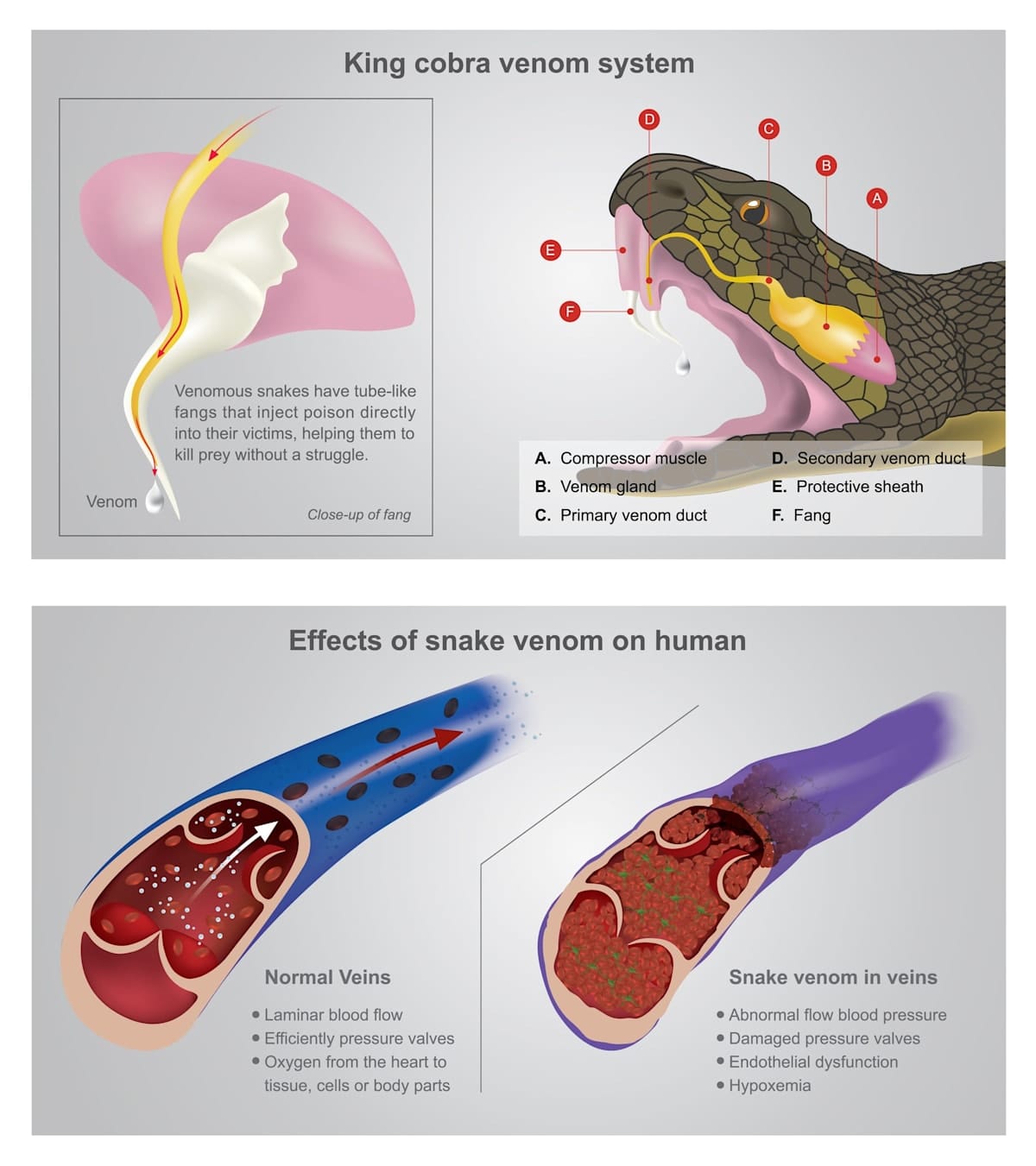
Snake envenomation continues to pose a significant burden in several countries within the Association of Southeast Asian Nations (ASEAN) region, leading to numerous fatalities and long-term disabilities.
Recognising the severity of snake envenomation, the World Health Organisation (WHO) officially reinstated snakebite envenomation as one of the neglected tropical diseases in 2017.
A Wellcome Trust-funded study led by researchers from Monash University Malaysia, The University of Utah, and Chulalongkorn University highlighted significant challenges in managing snake envenomation, including access to antivenom and efficacy.
The ASEAN snake envenomation crisis
In the ASEAN countries, except for Brunei and Singapore, where snakebites are rare or data is lacking, an estimated annual range of 78,000 to 470,000 cases of snakebite envenoming occur. Unfortunately, these incidents led to a significant loss of lives, with reported fatalities between 700 and 18,000 each year. Notably, Vietnam alone documented approximately 30,000 envenoming cases in 2008.
This data underscores the critical need for improved snakebite prevention, treatment, and awareness initiatives within the region.
Among the 10 countries of the ASEAN region, only five have the capability to produce antivenom. Among these, Malaysia and Thailand have established robust systems ensuring sufficient antivenom availability within their healthcare systems.
In contrast, Indonesia and the Philippines face considerable gaps in this regard. This scarcity necessitates the transportation of antivenom from external sources, and any inefficiencies within the supply chain could significantly disrupt the timely access to this life-saving treatment.
A distressing pattern has been observed in at least three countries, where the administration of expired antivenom has taken place due to the unavailability of fresh supplies.
This situation underscores the critical need for not only bolstering antivenom production, but also establishing resilient distribution networks to ensure the availability of unexpired and highly effective antivenom when urgently required.

The designation of snakebite envenoming as a neglected tropical disease by the World Health Organisation marked a pivotal turning point and galvanised concerted action to address it more effectively.
This recognition prompted the mobilisation of resources and collaborative efforts to tackle the challenge head-on. As a result, a more comprehensive and harmonised strategy for managing snakebite envenoming emerged, encompassing various facets from innovative research initiatives, to enhanced prevention and treatment methods.
A diverse array of venomous snake species coexist in the ASEAN region, among them kraits, pit vipers, and elapids. This variety underscores the complexity of crafting a “universal” antivenom capable of effectively countering the venom of all these species.
The impediment lies in these snakes’ complex compositions of venom, each presenting a unique combination of proteins and toxins that contribute to their clinical manifestations.
Role of mass spectrometry and proteomics
Mass spectrometry technology and proteomics studies are pivotal in advancing the development of a universal snake antivenom, employing a markedly different approach than traditional methods.
Mass spectrometry facilitates the comprehensive identification of proteins present within snake venoms. This is achieved by analysing the mass and peptide sequences of the proteins, enabling the discernment of a wide array of venom constituents.
A significant breakthrough is achieved by employing immunoprecipitation assays with mass spectrometry. These assays allow for identifying common antigenic proteins present across diverse snake species.
“By utilising state-of-the-art mass spectrometry technology and proteomics study, we hope to develop a versatile antivenom that can provide broad-spectrum protection against these venomous species,” says Dr Syafiq Asnawi, from the Jeffrey Cheah School of Medicine and Health Sciences.

Dr Syafiq is also responsible for managing the proteomics and metabolomics patform with Professor Iekhsan Othman as the platform director at Monash University Malaysia.
PhD student Preetha Rajendiran, under the supervision of Dr Syafiq, plays a pivotal role in the project. She’s actively involved in designing and implementing experiments, data analysis, and developing novel strategies to enhance the efficacy and safety of the universal snake antivenom.
“I wish to offer hope and healing to those affected by snake envenomation,” she says.“ As a researcher and with my supervisor’s tireless guidance, I’m confident in unlocking new possibilities in the science behind snake antivenom production.”
The universal antivenom can be used across all species commonly found in Malaysia, and medical practitioners wouldn’t need to identify the snake before administering the treatment.
The production of the antivenom would be beneficial for all the countries in the ASEAN region. It could be replicated using different venoms from various regions.
The methodology and scientific principles employed in developing the universal antivenom can serve as a model for other areas grappling with similar challenges. By demonstrating the efficacy of targeting common antigenic proteins across a diverse range of snake species, this research could inspire the creation of analogous antivenoms tailored to the venom profiles prevalent in different parts of the world.
A collaborative effort
While The University of Utah and Chulalongkorn University aren’t directly involved in developing the universal antivenom, their roles in the broader “Burden of Snakebite” project funded by the Wellcome Trust grant are pivotal.
International collaboration fosters knowledge exchange, accelerates research, and enhances the potential success of projects such as these. Collaborative efforts across institutions and countries enable the pooling of expertise and resources, ultimately leading to more comprehensive solutions.
Snake envenomation remains a significant health challenge in the ASEAN region, and the development of a universal antivenom holds great promise in mitigating its impact.
Researchers are forging new paths in snakebite management through international collaboration, advanced scientific techniques, and the recognition of snakebite envenoming as a neglected tropical disease by the World Health Organisation.
This not only benefits the ASEAN region, but also offers a template for addressing similar challenges worldwide, potentially saving countless lives and reducing the long-term disability associated with snake envenomation.





